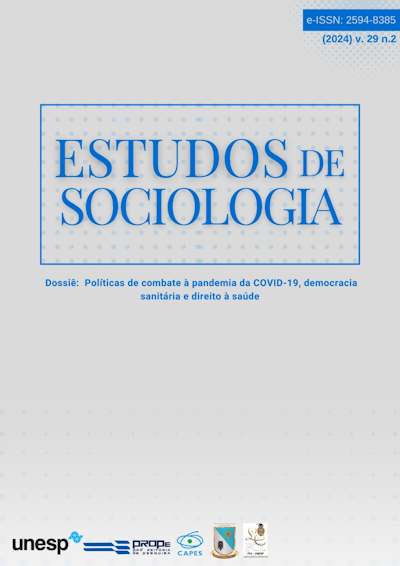The political and social life of preventive masks in São Paulo (Brazil, 2020)
DOI:
https://doi.org/10.52780/res.v29i2.19788Keywords:
Pandemic, Use of Preventive Masks, Pandemic way of life, Presentation of self, São PauloAbstract
This article deals with the use of masks to prevent the spread of COVID-19 in São Paulo, Brazil’s largest state, during 2020. Supporting a comprehensive and non-normative approach to this practice, it highlights some of its symbolic, sociological and political dimensions. Firstly, it proposes a typical-ideal characterization of the “pandemic way of life”, arising from the sudden ineffectiveness of routine hygiene practices and the need to incorporate others, in order to comply with non-pharmacological and preventive care for the spread and contamination of the “new coronavirus”. It highlights the maladjustments suffered by cognitive and bodily schemes, and particularly the new ways of controlling the “presentation of self”, through the “face-head set” - a part of the body that has been subjected to a contradictory regime of virtual display and in-person concealment. Next, we look at the tensions between the demands for self-presentation (in its symbolic dimension) and the compulsory use of masks - both sanitary (recommended by medical expertise) and political (imposed by the state and subject to punishment). Finally, some attitudes towards the use of masks are characterized - “early” voluntarism, resistance, negotiation and stylization. Based on these, the routinization of the “pandemic way of life” is discussed. Circumscribing the demonstration to São Paulo, this process is linked to the political management of the pandemic, exercised by the state government.
Downloads
Downloads
Published
How to Cite
Issue
Section
License

À revista Estudos de Sociologia ficam reservados os direitos autorais pertinentes a todos os artigos nela publicados.
Os artigos publicados e as referências citadas na revista Estudos de Sociologia são de inteira responsabilidade de seus autores.
A Estudos de Socilogia utiliza a licença https://creativecommons.org/licenses/by/4.0/ (CC BY), que permite o compartilhamento do artigo com o reconhecimento da autoria.



